Interventions for waterpipe smoking cessation
- PMID: 37286509
- PMCID: PMC10245833
- DOI: 10.1002/14651858.CD005549.pub4
Interventions for waterpipe smoking cessation
Abstract
Background: While cigarette smoking has declined globally, waterpipe smoking is rising, especially among youth. The impact of this rise is amplified by mounting evidence of its addictive and harmful nature. Waterpipe smoking is influenced by multiple factors, including appealing flavors, marketing, use in social settings, and misperceptions that waterpipe is less harmful or addictive than cigarettes. People who use waterpipes are interested in quitting, but are often unsuccessful at doing so on their own. Therefore, developing and testing waterpipe cessation interventions to help people quit was identified as a priority for global tobacco control efforts. OBJECTIVES: To evaluate the effectiveness of tobacco cessation interventions for people who smoke waterpipes.
Search methods: We searched the Cochrane Tobacco Addiction Review Group Specialized Register from database inception to 29 July 2022, using variant terms and spellings ('waterpipe' or 'narghile' or 'arghile' or 'shisha' or 'goza' or 'narkeela' or 'hookah' or 'hubble bubble'). We searched for trials, published or unpublished, in any language.
Selection criteria: We sought randomized controlled trials (RCTs), quasi-RCTs, or cluster-RCTs of any smoking cessation interventions for people who use waterpipes, of any age or gender. In order to be included, studies had to measure waterpipe abstinence at a three-month follow-up or longer.
Data collection and analysis: We used standard Cochrane methods. Our primary outcome was abstinence from waterpipe use at least three months after baseline. We also collected data on adverse events. Individual study effects and pooled effects were summarized as risk ratios (RR) and 95% confidence intervals (95% CI), using Mantel-Haenszel random-effects models to combine studies, where appropriate. We assessed statistical heterogeneity with the I2 statistic. We summarized secondary outcomes narratively. We used the five GRADE considerations (risk of bias, inconsistency of effect, imprecision, indirectness, and publication bias) to assess the certainty of the body of evidence for our primary outcome in four categories high, moderate, low, or very low.
Main results: This review included nine studies, involving 2841 participants. All studies were conducted in adults, and were carried out in Iran, Vietnam, Syria, Lebanon, Egypt, Pakistan, and the USA. Studies were conducted in several settings, including colleges/universities, community healthcare centers, tuberculosis hospitals, and cancer treatment centers, while two studies tested e-health interventions (online web-based educational intervention, text message intervention). Overall, we judged three studies to be at low risk of bias, and six studies at high risk of bias. We pooled data from five studies (1030 participants) that tested intensive face-to-face behavioral interventions compared with brief behavioral intervention (e.g. one behavioral counseling session), usual care (e.g. self-help materials), or no intervention. In our meta-analysis, we included people who used waterpipe exclusively, or with another form of tobacco. Overall, we found low-certainty evidence of a benefit of behavioral support for waterpipe abstinence (RR 3.19 95% CI 2.17 to 4.69; I2 = 41%; 5 studies, N = 1030). We downgraded the evidence because of imprecision and risk of bias. We pooled data from two studies (N = 662 participants) that tested varenicline combined with behavioral intervention compared with placebo combined with behavioral intervention. Although the point estimate favored varenicline, 95% CIs were imprecise, and incorporated the potential for no difference and lower quit rates in the varenicline groups, as well as a benefit as large as that found in cigarette smoking cessation (RR 1.24, 95% CI 0.69 to 2.24; I2 = 0%; 2 studies, N = 662; low-certainty evidence). We downgraded the evidence because of imprecision. We found no clear evidence of a difference in the number of participants experiencing adverse events (RR 0.98, 95% CI 0.67 to 1.44; I2 = 31%; 2 studies, N = 662). The studies did not report serious adverse events. One study tested the efficacy of seven weeks of bupropion therapy combined with behavioral intervention. There was no clear evidence of benefit for waterpipe cessation when compared with behavioral support alone (RR 0.77, 95% CI 0.42 to 1.41; 1 study, N = 121; very low-certainty evidence), or with self-help (RR 1.94, 95% CI 0.94 to 4.00; 1 study, N = 86; very low-certainty evidence). Two studies tested e-health interventions. One study reported higher waterpipe quit rates among participants randomized to either a tailored mobile phone or untailored mobile phone intervention compared with those randomized to no intervention (RR 1.48, 95% CI 1.07 to 2.05; 2 studies, N = 319; very low-certainty evidence). Another study reported higher waterpipe abstinence rates following an intensive online educational intervention compared with a brief online educational intervention (RR 1.86, 95% CI 1.08 to 3.21; 1 study, N = 70; very low-certainty evidence). AUTHORS' CONCLUSIONS: We found low-certainty evidence that behavioral waterpipe cessation interventions can increase waterpipe quit rates among waterpipe smokers. We found insufficient evidence to assess whether varenicline or bupropion increased waterpipe abstinence; available evidence is compatible with effect sizes similar to those seen for cigarette smoking cessation. Given e-health interventions' potential reach and effectiveness for waterpipe cessation, trials with large samples and long follow-up periods are needed. Future studies should use biochemical validation of abstinence to prevent the risk of detection bias. Finally, there has been limited attention given to high-risk groups for waterpipe smoking, such as youth, young adults, pregnant women, and dual or poly tobacco users. These groups would benefit from targeted studies.
Copyright © 2023 The Cochrane Collaboration. Published by John Wiley & Sons, Ltd.
Conflict of interest statement
TA has no known conflicts of interest
KDW has no known conflicts of interest
OJO has no known conflicts of interest
TMG has no known conflicts of interest
WM has no known conflicts of interest
TE is a paid consultant in litigation against the tobacco industry and the electronic cigarette industry. TE is named on one patent for a device that measures the puffing behavior of electronic cigarette users and on another patent for a smartphone app that determines electronic cigarette device and liquid characteristics.
JLB is managing editor of the Cochrane Tobacco Addiction Group. He has no conflicts of interest.
Figures
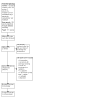
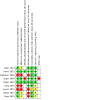
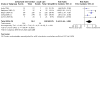
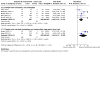
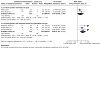

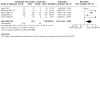
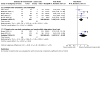
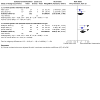

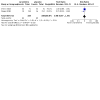
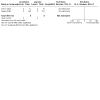
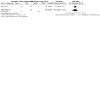
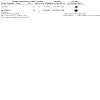
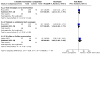
Update of
-
Interventions for waterpipe smoking cessation.Cochrane Database Syst Rev. 2015 Jul 31;2015(7):CD005549. doi: 10.1002/14651858.CD005549.pub3. Cochrane Database Syst Rev. 2015. Update in: Cochrane Database Syst Rev. 2023 Jun 7;6:CD005549. doi: 10.1002/14651858.CD005549.pub4. PMID: 26228266 Free PMC article. Updated.
References
References to studies included in this review
Asfar 2014 {published data only}
-
- NCT01135173. Waterpipe Cessation Intervention Study. clinicaltrials.gov/ct2/show/NCT01135173 (first posted 2 June 2010).
Chami 2022 {published data only}
-
- Chami HA, Zaouk N, Makki M, Tamim H, Shaya M, Talih F. Varenicline treatment for waterpipe smoking cessation. Nicotine and Tobacco Research 2023;25(1):111-9. - PubMed
-
- NCT02575183. Varenicline (Chantix) Treatment for Waterpipe Smoking Cessation. clinicaltrials.gov/ct2/show/NCT02575183 (first posted 14 October 2015).
Dadipoor 2022 {published data only}
-
- IRCT20190126042494N1. Design, implementation and evaluation of a hookah smoking quitting program among women in Bandar Abbas with an intervention mapping approach. en.irct.ir/trial/37129 (first registered 03 March 2019).
Dogar 2014 {published data only}
-
- Dogar O, Jawad M, Shah SK, Newell JN, Kanaan M, Khan MA, et al. Effect of cessation interventions on hookah smoking: post-hoc analysis of a cluster-randomized controlled trial. Nicotine & Tobacco Research 2014;16(6):682-8. - PubMed
-
- Elsey H, Dogar O, Ahluwalia J, Siddiqi K. Predictors of cessation in smokers suspected of TB: secondary analysis of data from a cluster randomized controlled trial. Drug and Alcohol Dependence 2015;155:128-33. - PubMed
-
- ISRCTN08829879. An intervention to stop tobacco use among patients suspected of tuberculosis (TB). www.isrctn.com/ISRCTN08829879 (submitted 5 December 2008).
-
- Siddiqi K, Khan A, Ahmad M, Dogar O, Kanaan M, Newell JN, et al. Action to stop smoking in suspected tuberculosis (ASSIST)in Pakistan: a cluster randomized, controlled trial. Annals of Internal Medicine 2013;158(9):667-75. - PubMed
Dogar 2018 {published data only}
-
- Dogar O, Zahid R, Mansoor S, Kanaan M, Ahluwalia JS, Jawad M, et al. Varenicline versus placebo for waterpipe smoking cessation: a double-blind randomized controlled trial. Addiction 2018;113(12):2290-9. - PubMed
-
- ISRCTN94103375. Hookah trial: the efficacy of varenicline in achieving abstinence among hookah smokers. isrctn.com/ISRCTN94103375 (first submitted 20 November 2015).
-
- Kanaan M, Dogar O, Zahid R, Mansoor S, Jawad M, Ahluwalia JS, et al. Dependence and withdrawal symptoms among waterpipe tobacco smokers enrolled in a double-blind, placebo-controlled, randomised trial. Tobacco Induced Diseases 2018;16(1):341.
-
- Shtaiwi A, Siddiqui F, Kanaan M, Siddiqi K. What factors are associated with waterpipe smoking cessation? A secondary data analysis. Nicotine and Tobacco Research 2022;24(4):581-9. - PubMed
Jiang 2019 {published data only}
Joveini 2020 {published data only}
-
- Joveini H, Rohban A, Eftekhar AH, Dehdari T, Maheri M, Hashemian M. The effects of an education program on hookah smoking cessation in university students: an application of the Health Action Process Approach (HAPA). Journal of Substance Use 2020;25(1):62-9.
Lipkus 2011 {published and unpublished data}
References to studies excluded from this review
Alzyoud 2018 {published data only}
-
- Alzyoud S, Sreenivas V, Pbert L. Effectiveness of waterpipe smoking cessation intervention with youth. Tobacco Induced Diseases 2018;16(1):339-40.
Leavens 2018 {published data only}
Mohammadi 2019 {published data only}
-
- Mohammadi M, Ghaleiha A, Rahnama R. Effectiveness of a peer-led behavioral intervention program on tobacco use-related knowledge, attitude, normative beliefs, and intention to smoke among adolescents at Iranian public high schools. International Journal of Preventive Medicine 2019;10:111. - PMC - PubMed
Mohlman 2013 {published data only}
Mojahed 2018 {published data only}
-
- IRCT20160924029954N5. Impact of motivational interview on reducing hookah consumption. www.irct.ir/trial/23951 (first registered 22 January 2018).
-
- Mojahed K, Navidian A. The effect of motivational interviewing on craving and dependence on hookah in suburban pregnant women in South East of Iran. Issues in Mental Health Nursing 2018;39(8):693-9. - PubMed
Nakkash 2018 {published data only}
-
- Nakkash R, Lotfi T, Bteddini D, Haddad P, Najm H, Jbara L, et al. A randomized controlled trial of a theory-informed school-based intervention to prevent waterpipe tobacco smoking: changes in knowledge, attitude, and behaviors in 6th and 7th graders in Lebanon. International Journal of Environmental Research and Public Health 2018;15(9):1839. - PMC - PubMed
Shelley 2021 {published data only}
-
- Nguyen NT, Nguyen T, Abroms LC, Doan HT, Shelley DR. Feasibility, acceptability, and preliminary effectiveness of a text messaging intervention for smoking cessation in Vietnam. Tobacco Induced Diseases 2021;19(1):A284. [DOI: 10.18332/tid/141608] - DOI
-
- Shelley D, Jiang N, Cleland C, Nguyen T, Abroms L, Nguyen N. Adaptation and assessment of a text message cessation intervention for tobacco users in Vietnam. Cancer Epidemiology, Biomarkers & Prevention 2021;30(7 [Suppl]):17.
Shishani 2018 {published data only}
-
- Shishani K, Odom-Maryon T, Roll J. The role of behavioral therapy in treating waterpipe addiction. Tobacco Induced Diseases 2018;16(1):197.
-
- Shishani K, Odom-Maryon T, Roll JM. A randomized clinical trial to evaluate the efficacy of contingency management for treatment of waterpipe tobacco addiction. The American Journal on Addictions 2018;27(3):202-9. - PubMed
Thomas 2015 {published data only}
Additional references
Abbadi 2020
Aboaziza 2015
Ahn 2012
-
- Ahn S, Myers ND, Jin Y. Use of the estimated intraclass correlation for correcting differences in effect size by level. Behavior Research Methods 2012;44(2):490-502. - PubMed
Akl 2011
Akl 2015
Al‐Faham 2018
Al‐Sheyab 2016
-
- Al-Sheyab NA, Al-Fuqha RA, Kheirallah KA, Khabour OF, Alzoubi KH. Anthropometric measurements of newborns of women who smoke waterpipe during pregnancy: a comparative retrospective design. Inhalation Toxicology 2016;28(13):629-5. - PubMed
Alam 2020
-
- Alam MM, Ward KD, Bahelah R, Kalan ME, Asfar T, Eissenberg T, et al. The Syrian Center for Tobacco Studies-13 (SCTS-13): psychometric evaluation of a waterpipe-specific nicotine dependence instrument. Drug and Alcohol Dependence 2020;215:108192. [DOI: 10.1016/j.drugalcdep.2020.108192] - DOI - PMC - PubMed
Alomari 2018
-
- Alomari MA, Al-sheyab NA. Dual tobacco smoking is the new trend among adolescents: update from the Irbid-TRY. Journal of Substance Use 2018;23(1):92-8.
Arrazola 2015
Asfar 2016
Asfar 2020
Azab 2013
Babaie 2021
Baheiraei 2012
-
- Baheiraei A, Mirghafourvand M, Nedjat S, Mohammadi E, Mohammad-Alizadeh Charandabi S. Prevalence of water pipe use and its correlates in Iranian women of reproductive age in Tehran: a population-based study. Medical Principles and Practice 2012;21(4):340-4. - PubMed
Bahelah 2017
Bhatnagar 2019
Cahill 2013
Carson‐Chahhoud 2019
Covidence [Computer program]
-
- Covidence. Version accessed July 2022. Melbourne, Australia: Veritas Health Innovation. Available at covidence.org.
Ebrahimi 2020
Ebrahimi 2021
Eissenberg 2009
El‐Zaatari 2015
Gathuru 2015
-
- Gathuru IM, Tarter RE, Klein-Fedyshin M. Review of hookah tobacco smoking among college students: policy implications and research recommendations. American Journal of Drug and Alcohol Abuse 2015;41(4):272-80. - PubMed
GRADEpro GDT [Computer program]
-
- GRADEpro GDT. Version accessed 2023. Hamilton (ON): McMaster University (developed by Evidence Prime). Available from gradepro. org.
Hajizadeh 2023
Hartmann‐Boyce 2018
Hartmann‐Boyce 2019
Hartmann‐Boyce 2021
-
- Hartmann-Boyce J, Livingstone-Banks J, Ordonez-Mena JM, Fanshawe TR, Lindson N, Freeman SC, et al. Behavioural interventions for smoking cessation: an overview and network meta-analysis. Cochrane Database of Systematic Reviews 2021, Issue 1. Art. No: CD013229. [DOI: 10.1002/14651858.CD013229.pub2] - DOI - PMC - PubMed
Higgins 2011
Higgins 2017
-
- Higgins JPT, Altman DG, Sterne JAC, editor(s). Chapter 8: Assessing risk of bias in included studies. In: Higgins JPT, Churchill R, Chandler J, Cumpston MS, editor(s), Cochrane Handbook for Systematic Reviews of Interventions Version 5.2.0 (updated June 2017), Cochrane, 2017. Available from www.training.cochrane.org/handbook.
Higgins 2022
-
- Higgins JPT, Thomas J, Chandler J, Cumpston M, Li T, Page MJ, et al, editor(s). Cochrane Handbook for Systematic Reviews of Interventions Version 6.3 (updated February 2022). Cochrane, 2022. Available from www.training.cochrane.org/handbook.
Holliday 2021
Jaber 2015
Jawad 2013
-
- Jawad M, McEwen A, McNeill A, Shahab L. To what extent should waterpipe tobacco smoking become a public health priority? Addiction 2013;108(11):1873-84. - PubMed
Jawad 2016
Jawad 2018
Johnson 2019
Johnston 2016
-
- Johnston LD, O'Malley PM, Miech RA, Bachman JG, Schulenberg JE . Monitoring the future national survey results on drug use, 1975-2015: overview, key findings on adolescent drug use. Available at eric.ed.gov/?id=ED578539 2016:1-204.
Kader 2019
-
- Kader Z, Roman NV, Crutzen R. Systematic review of interventions aimed at reducing hookah pipe use: implications for practitioners and clinicians. South African Medical Journal 2019;109(6):392-406. - PubMed
Khabour 2016
Klosterhalfen 2020
-
- Klosterhalfen S, Kotz D, Kuntz B, Zeiher J, Starker A. Waterpipe use among adolescents in Germany: prevalence, associated consumer characteristics, and trends (German Health Interview and Examination Survey for Children and Adolescents, KiGGS). International Journal of Environmental Research and Public Health 2020;17(21):7740. - PMC - PubMed
Lancaster 2017
Lindson 2019
-
- Lindson N, Chepkin SC, Ye W, Fanshawe TR, Bullen C, Hartmann-Boyce J. Different doses, durations and modes of delivery of nicotine replacement therapy for smoking cessation. Cochrane Database of Systematic Reviews 2019, Issue 4. Art. No: CD013308. [DOI: 10.1002/14651858.CD013308] - DOI - PMC - PubMed
Livingstone‐Banks 2019
Livingstone‐Banks 2022
-
- Livingstone-Banks J, Lindson N, Hartmann-Boyce J, Aveyard P. Effects of interventions to combat tobacco addiction: Cochrane update of 2019 and 2020. Addiction 2022;117:1573-88. [DOI: ] - PubMed
Livingstone‐Banks 2023
Martin 2009
-
- Martin J. Booming hookah biz links China, Iran, Egypt - and Texas. CNNMoney. First published: 26 August 2009: 5:17 AM ET. Available at money.cnn.com/2009/08/26/smallbusiness/hookah_entrepreneur.fsb/index.htm.
Matkin 2019
Mays 2016
Maziak 2009
Maziak 2015b
Maziak 2015c
-
- Maziak W. Rise of waterpipe smoking. BMJ 2015;350:h1991. - PubMed
Maziak 2019
Mirahmadizadeh 2008
-
- Mirahmadizadeh A, Nakhaee N. Prevalence of waterpipe smoking among rural pregnant women in Southern Iran. Medical Principles and Practice 2008;17(6):435-9. - PubMed
Monzer 2008
-
- Monzer B, Sepetdjian E, Saliba N, Shihadeh A. Charcoal emissions as a source of CO and carcinogenic PAH in mainstream narghile waterpipe smoke. Food and Chemical Toxicology 2008;46(9):2991-5. - PubMed
Nematollahi 2018
Nguyen 2013
-
- Nguyen T, Hlangothi D, Martinez RA 3rd, Jacob D, Anthony K, Nance H, et al. Charcoal burning as a source of polyaromatic hydrocarbons in waterpipe smoking. Journal of Environmental Science and Health - Part B 2013;48(12):1097-102. - PubMed
Notley 2019
Parker 2005
Piper 2006
-
- Piper ME, McCarthy DE, Baker TB. Assessing tobacco dependence: a guide to measure evaluation and selection. Nicotine & Tobacco Research 2006;8(3):339-51. - PubMed
Pourmohammad 2016
-
- Pourmohammad Shandiz Zahra, Ghanaei CHamanabad Ali, Mashhadi Ali. Effectiveness of transcranial direct current stimulaton (tDCS) on reducing craving among hookah smokers. Research Journal of Medical Sciences 2016;10(3):139-46.
Rastam 2011
Review Manager 2020 [Computer program]
-
- Review Manager 5 (RevMan 5). Version 5.4. The Cochrane Collaboration, 2020.
Rice 2017
Rigotti 2022
Salloum 2016
Schünemann 2022
-
- Schünemann HJ, Higgins JPT, Vist GE, Glasziou P, Akl EA, Skoetz N, et al. Chapter 14: Completing ‘Summary of findings’ tables and grading the certainty of the evidence. In: Higgins JPT, Thomas J, Chandler J, Cumpston M, Li T, Page MJ, et al, editor(s). Cochrane Handbook for Systematic Reviews of Interventions Version 6.3 (updated February 2022). Cochrane, 2022. Available from training.cochrane.org/handbook.
Schünemann 2022a
-
- Schünemann HJ, Brennan S, Davoli M, Mustafa RA, Akl EA, Meerpohl JJ, et al. Strong and high-quality evidence synthesis needs Cochrane: a statement of support by the GRADE Guidance Group. Journal of Clinical Epidemiology 2022 [Epub 2022 Oct 9];152:285–7. [DOI: 10.1016/j.jclinepi.2022.10.001] - DOI - PubMed
Sharma 2020
Shelley 2017
Siddiqi 2013
Soneji 2015
Stead 2013
Stead 2016
Stead 2017
Sutfin 2018
Tamim 2008
-
- Tamim H, Yunis KA, Chemaitelly H, Alameh M, Nassar AH. Effect of narghile and cigarette smoking on newborn birthweight. BJOG 2008;115(1):91-7. - PubMed
Taylor 2017
Tzelepis 2019
Villanti 2017
Ward 2015
-
- Ward KD, Siddiqi K, Ahluwalia JS, Alexander AC, Asfar T. Waterpipe tobacco smoking: the critical need for cessation treatment. Drug and Alcohol Dependence 2015;153:14-21. - PubMed
Waziry 2017
-
- Waziry R, Jawad M, Ballout RA, Al Akel M, Akl EA. The effects of waterpipe tobacco smoking on health outcomes: an updated systematic review and meta-analysis. International Journal of Epidemiology 2017;46(1):32-43. - PubMed
West 2005
-
- West R, Hajek P, Stead L, Stapleton J. Outcome criteria in smoking cessation trials: proposal for a common standard. Addiction 2005;100(3):299-303. - PubMed
Whittaker 2019
WHO 2015
-
- World Health Organization. Waterpipe Tobacco Smoking and Health. apps.who.int/iris/bitstream/handle/10665/179523/WHO_NMH_PND_15.4_eng.pdf (Accessed July 2022).
WHO 2015a
-
- World Health Organization (WHO). Advisory note: waterpipe tobacco smoking: health effects, research needs and recommended actions by regulators. Available from www.who.int/publications/i/item/advisory-note-waterpipe-tobacco-smoking-... (Accessed July 2022).
References to other published versions of this review
Maziak 2005
Maziak 2007
Publication types
MeSH terms
Substances
Grants and funding
LinkOut - more resources
Full Text Sources
Medical

